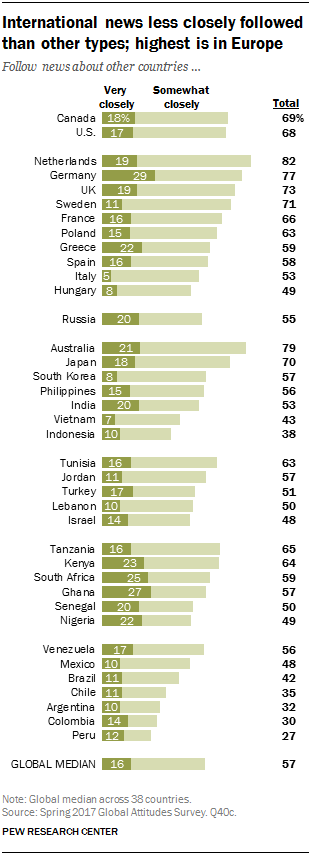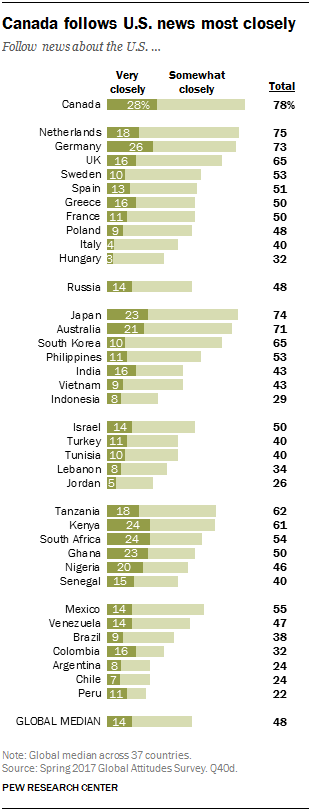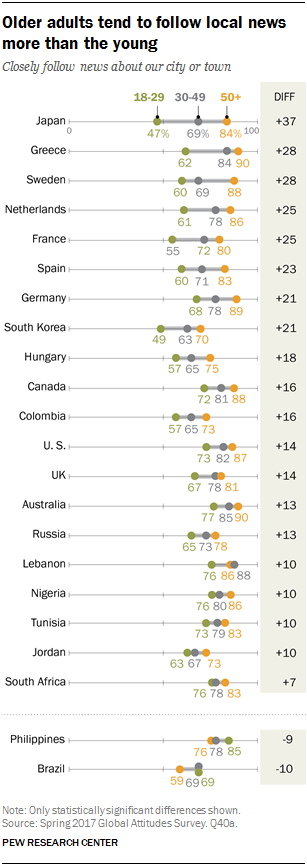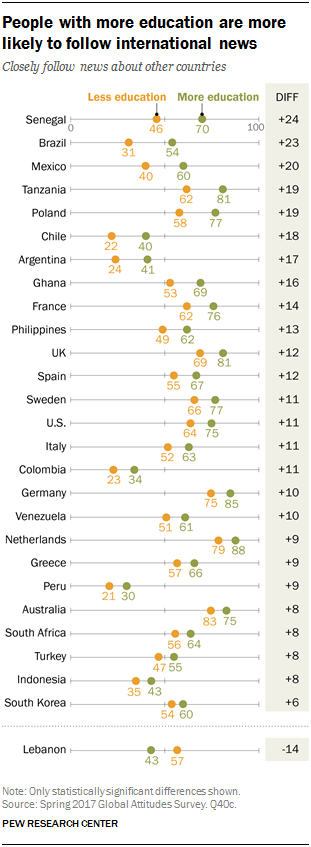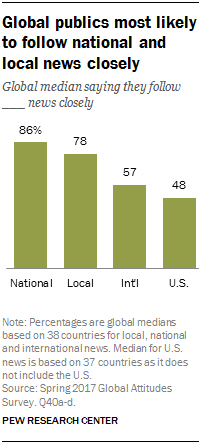
Publics around the globe consume all types of news, but they are most interested in news that’s close to home. Among the four key news topics asked about, global medians of at least three-quarters say they follow news about their country (86%) or city and town (78%) closely, compared with fewer than six-in-ten who say the same when it comes to news about other countries generally (57%) and the U.S. specifically (48%).
The type of news people follow closely varies by age and education level. In roughly half of the countries surveyed, those ages 50 and older are more likely to pay attention to news about their city or town than are younger people. And those with more education are more likely to follow international and U.S. news than those with less education. There are also differences between women and men on interest in news, especially international news and news about the U.S. specifically.
Globally, broad majorities follow national news
An overwhelming majority follows national news closely (global median of 86%), including a median of 44% who do so very closely.
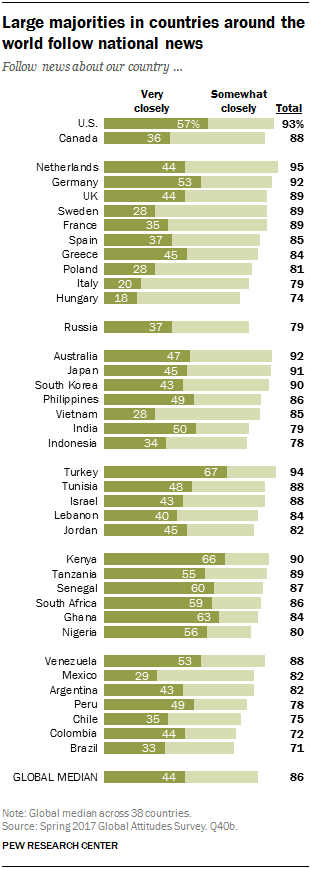
While there are few differences by region in the portions following national news closely, some significant differences emerge in the percentage that follows it very closely. Fewer than half in most regions say they follow national news very closely, but majorities in all six sub-Saharan African countries do so. Some countries across the other regions also stand out, including Turkey (67%), the U.S. (57%), Germany (53%), Venezuela (53%) and India (50%). At the other end of the spectrum, the lowest rate of following national news very closely occurs in Hungary (18%) and Italy (20%).
Widespread interest in local news
As with national news, majorities follow local news closely in all 38 countries surveyed. A global median of 78% say they follow news about their city or town closely, including 36% who follow local news very closely.
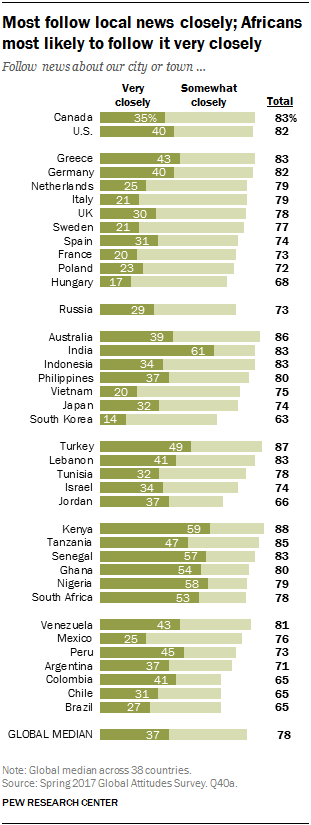
There is relatively little difference across regions in whether people follow local news closely, but more variation when it comes to following it very closely. Again, strong interest is highest in sub-Saharan Africa (median of 56% very closely), while it is lowest in Europe (24%). Across other regions, India stands out for its percentage that follows local news very closely (61%).
In most of the countries surveyed, interest in local news is equal to or lower than interest in national news. People follow local news more than national news in just two countries – India and Indonesia.
International and U.S. news a lesser part of people’s media diet
Publics in 37 of the 38 countries surveyed are less likely to closely follow news about other countries than they are to follow national or local news. A global median of 57% say they follow international news closely, and just 16% follow it very closely.
Interest in international news varies by geographic region. Europeans are most likely to say they follow international news closely (median of 65%), while people in Latin America express the lowest level of interest in this type of news (35%). There is little variation, on the other hand, in the percentage that follows international news very closely; in all countries surveyed, no more than three-in-ten say they follow international news very closely.
Even fewer people follow news specifically about the U.S. than international news generally, with a global median of 48% saying they follow it closely. Still, majorities in 10 nations follow news about the U.S. closely. In five of these countries, more than seven-in-ten follow news about the U.S. closely: Canada (78%), the Netherlands (75%), Japan (74%), Germany (73%) and Australia (71%).
Demographic divides in news interest
In 20 countries, people ages 50 and older are more likely than those ages 18 to 29 to follow local news closely. The greatest difference is in Japan, where 84% of those 50 and older follow local news closely, compared with just 47% of those 18-29. The differences tend to be largest in Europe: Sweden, Greece, France, the Netherlands, Spain and Germany all show age gaps of at least 20 percentage points. The only countries where this pattern is reversed are the Philippines and Brazil, where 85% and 69% of those 18-29 follow local news closely, respectively.
Older people also follow national, international and U.S. news more closely than younger people, but the differences are less stark. Those 50 and older are more likely than people younger than 30 to follow national news in 12 countries; more likely to follow international news in nine countries; and more likely to follow U.S. news in five. Similar to local news, the differences between the oldest and youngest on national and international news consumption are greater in Europe than in other regions.
In 26 of the 38 countries surveyed, people with a higher education are more likely than those with a lower education to follow international news in particular. Education differences are smaller and less common for national and local news.
This education gap on following international news is at least 10 percentage points in 18 countries. The difference is especially high in Latin America, where six of the seven countries surveyed show a 10-point gap or more.
Men are more likely than women to follow international news closely in 13 countries. The gender gap is largest in Nigeria (22 percentage points) and Tanzania (16 points). Men are also more likely than women to closely follow news about the U.S. in 12 countries.
